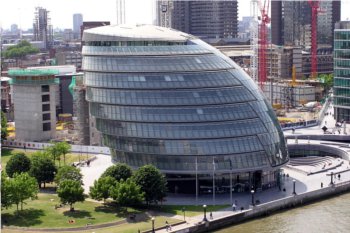Capital expenditure by local authorities in England rose by 5.2% to £22.6bn last year, with highways and transport spending making up the bulk of the increase.
The figures come in a statistical release from the Department for Communities and Local Government (DCLG).

Spending by the GLA made up 22.5% of the national total
Officials said the 5.2% increase in capital expenditure by authorities in England from £21.5bn in 2014-15bn to £22.6bn was ‘mainly due to an increase in expenditure in both the acquisition of share and loan capital and new construction and conversion of assets’.
Capital spending on highways and transport rose £0.9bn to £8.3bn – the largest year-on-year increase of any spending area.
Officials said £0.5 bn (58.4%) of this increase in was due to Transport for London (TfL), which is responsible for 51.9% of England’s total transport capital expenditure. DCLG said TfL gave ‘final payments to Crossrail’ as a reason for this year’s increase.
Spending by the Greater London Authority as a whole made up 22.5% of the national total.
Nationally, planning and development services saw an increase of £0.2bn in capital expenditure – the second largest – to £1.7bn overall. Explanations provided by local authorities highlighted an increase in local regeneration schemes.
In terms of funding for capital spending, central government grants saw the greatest year-on-year increase in cash terms, rising £0.8bn to £9.3bn. Grants from central government remain the largest source of funding for local authority capital spending, accounting for 41.1% of funding in 2015-16.
Capital receipts increased to £3.6bn from £3.0bn, a year-on-year increase of 19.4%.
Forecasting adjustments narrow the gap
Officials said overall capital expenditure was £0.2 billion (1.0%), higher than the £22.4bn forecast. However, this was based on a revised forecast, with the original forecast at £25.9bn.
Officials explained in June that they had revised the methodology and formula they used to tackle an increasing tendency to over-forecast, creating ‘a step change in the England estimates’. This change was intended ‘to create an estimate closer to the outturn expenditure’.
They explained that the difference between the reported forecast and outturn level of capital expenditure has been increasing over the last five years, with differences due to slippage in timings of projects, changes in service priorities or in financial capabilities of an authority throughout the year.
Register now for full access
Register just once to get unrestricted, real-time coverage of the issues and challenges facing UK transport and highways engineers.
Full website content includes the latest news, exclusive commentary from leading industry figures and detailed topical analysis of the highways, transportation, environment and place-shaping sectors.
Use the link below to register your details for full, free access.
Already a registered? Login